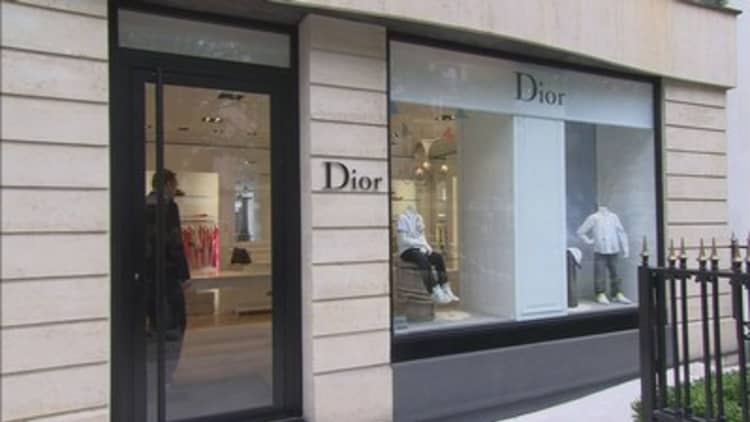
Sure, their items cost more. But the struggles of the high-end retail market aren't all that different from its lower-price counterparts.
As wealthy shoppers shell out more of their money on fancy cars and travel, luxury handbags and other personal high-end goods are being left behind. According to a new report by Bain and Altagamma, the global luxury goods market is rising 4 percent this year, to 1.08 billion euros. Yet personal luxury goods are one of two categories expected to contract, and are seen falling by 1 percent.
Several culprits are contributing to the category's slowdown, including wild currency swings and terror attacks in key fashion cities. Some of the lesser-known issues that these brands are grappling with mimic those of the lower-end market: Discounting, price transparency, and a shift toward spending on experiences.
"More and more consumers are questioning the real value of luxury goods brands," said Claudia D'Arpizio, a partner at Bain.
Like mainstream retailers, luxury brands have been ceding share to off-price competitors, who sell their goods for less. Since 2013, the channel has had an estimated 23 percent compound annual growth rate. That means it will account for about 12 percent of the market by year's end, compared with 7 percent three years earlier.
Discounting at department stores and branded luxury shops have also made consumers reluctant to spend three or four figures on the latest handbag, D'Arpizio said. It's become even more challenging as design houses have stuck with a particular aesthetic to make their product recognizable, making consumers less motivated to jump at the newest full-price items.
Another factor is rapid growth in online shopping, which has made it tougher for high-end brands to command a premium because it's easy for consumers to compare prices. Though online shopping will account for just 7 percent of luxury retail spending by year's end, it's likely to hit 15 percent to 20 percent share in the next five years, D'Arpizio said.
When wealthy shoppers do spend, they're increasingly doing so on travel and entertainment. Sales of luxury hotels, wines and spirits and food are all expected to rise 4 percent, the report found. D'Arpizio said there's opportunity for luxury retailers to tap into this desire, by making it a more unique experience to visit their stores and wear their product.
In another parallel to the broader market, luxury retailers positioned in the middle are struggling the most. As the rich get richer, ultra high-end labels are still grabbing share; and as younger millennials start to accumulate wealth, more affordable brands are likewise seeing growth. That's why many designers are focused on creating more entry-level items, so they can hook consumers while they're young, D'Arpizio said.
"Polarization is happening across the different retail sectors," she said, explaining that as the luxury market matures, there will be a shakeout. And just as mainstream retailers opened too many stores, high-end shops in coming years will likely close more stores, as online shopping becomes a bigger piece of the pie, she said.


